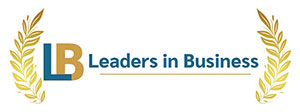A mathematical framework that builds on the economic theory of hidden-action models provides insight into how the unobservable nature of effort and risk shapes investigators’ research strategies and the incentive structures within which they work, according to a study published August 15 in PLOS Biology by Kevin Gross from North Carolina State University, U.S., and Carl Bergstrom from the University of Washington, U.S.
Latest Articles
- [ November 13, 2024 ] Portable spectrophotometer approach predicts shelf life of strawberries in real time Biotech
- [ November 13, 2024 ] Most surveyed grocery shoppers report noticing shrinkflation Economy
- [ November 13, 2024 ] The time is ripe to support urban agriculture: Experts urge Congress to fund new iteration of Farm Bill Agriculture
- [ November 13, 2024 ] Metagenomic profiling method with enhanced precision uses fewer computing resources Biotech
- [ November 13, 2024 ] A new vertical seed distribution trait for soybean breeding Agriculture
© 2024 LeadersInBusiness.org - Celebrating Business Leaders Around The World
